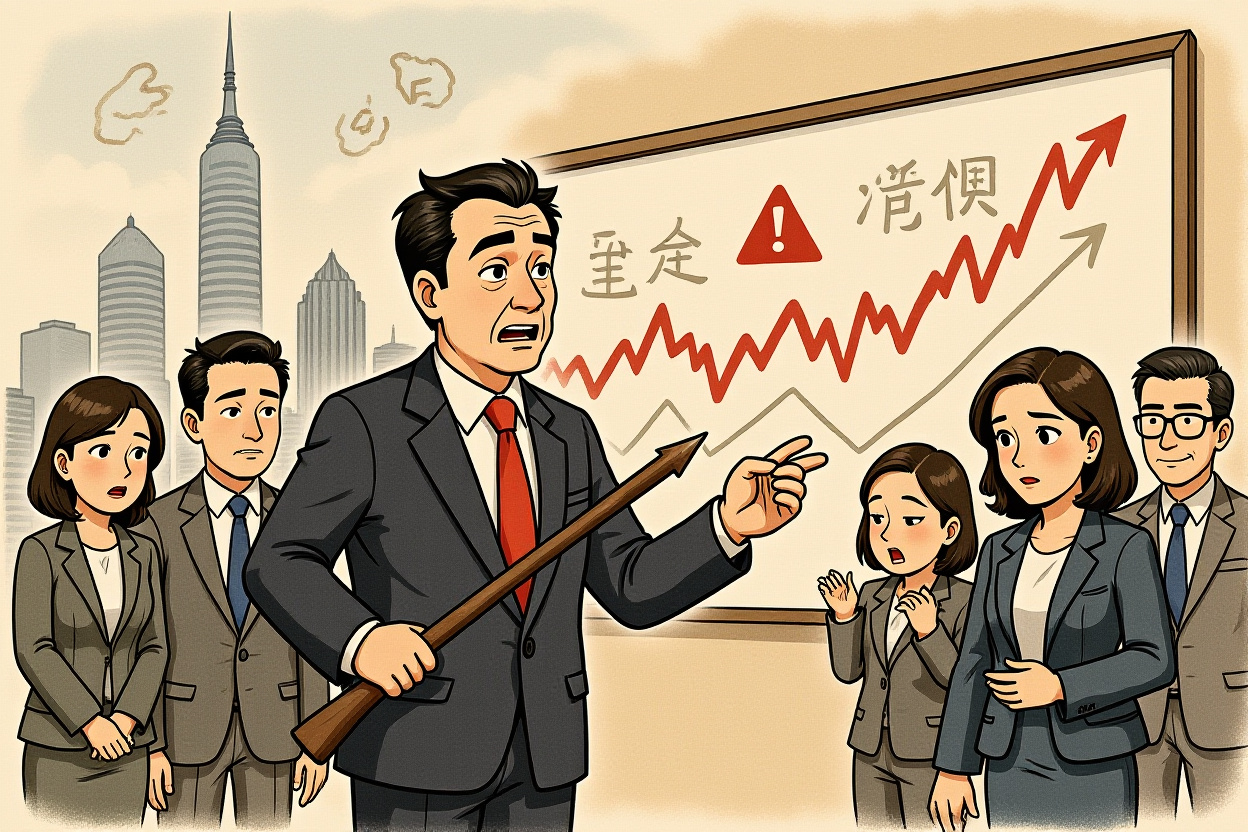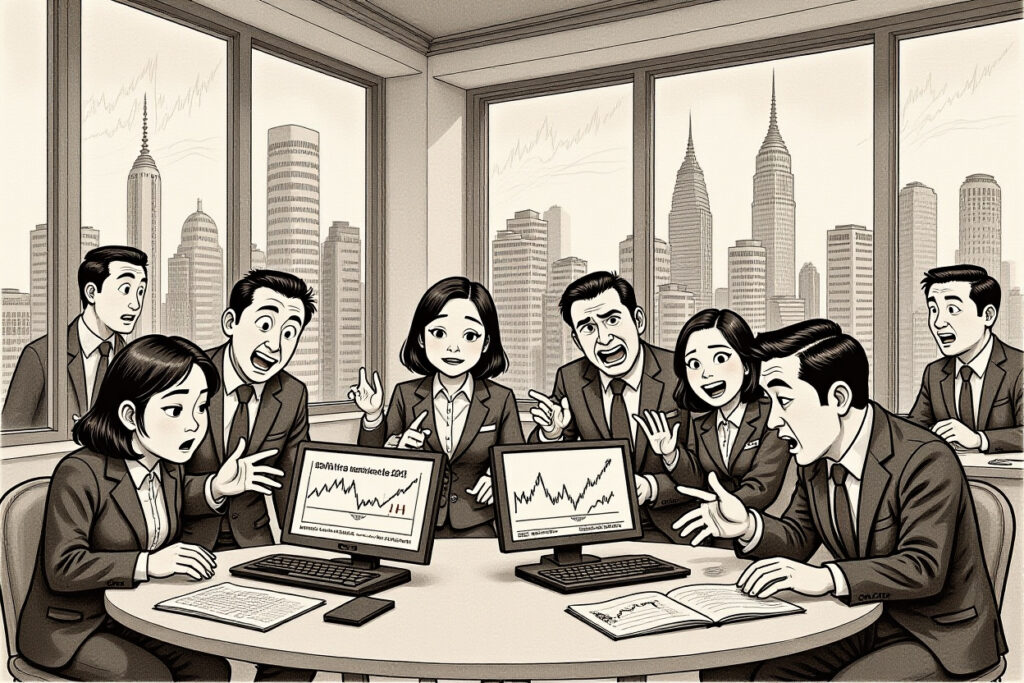Veteran Economist Flags Market Overheating Risks
Just days before the Phoenix Bay Area Financial Forum 2025, former brokerage chief economist Li Daxiao (李大霄) issued a stark warning about developing bubbles in China’s equity markets. His comments highlight growing concerns about retail investor behavior driving what he termed irrational upside moves in certain stocks. This development warrants close attention from institutional investors monitoring Chinese market stability.
Market Context and Timing
Li’s remarks come during a period of increased retail participation in Chinese equities, with the CSI 300 index showing elevated volatility patterns. Historical data suggests that when veteran economists like Li Daxiao voice concerns about irrational upside movements, market corrections typically follow within 2-3 quarters.
Understanding Irrational Market Behavior
The concept of irrational upside refers to price movements disconnected from fundamental valuations, often driven by emotional trading or herd behavior. In China’s markets, this frequently manifests through:
– Retail investor speculation in small-cap stocks
– Momentum chasing in technology sectors
– Limited fundamental analysis driving investment decisions
– Social media influenced trading patterns
Historical Precedents
China’s markets have experienced similar episodes of irrational exuberance, most notably during the 2015 market bubble and subsequent crash. Regulatory authorities including the China Securities Regulatory Commission (CSRC, 中国证监会) have since implemented circuit breakers and other mechanisms to prevent extreme volatility.
Sector-Specific Vulnerabilities
Analysis of recent trading patterns indicates particular sectors showing signs of irrational price movements. Technology and new energy stocks have demonstrated the most pronounced disconnects between price and fundamental value, with some companies trading at multiples far exceeding global counterparts.
Quantifying the Risk
Data from the Shanghai Stock Exchange (上海证券交易所) shows retail trading volume accounting for approximately 85% of total volume in stocks identified as having irrational upside characteristics. This concentration of retail participation creates vulnerability to sudden sentiment shifts.
Regulatory Response Framework
Chinese regulators maintain multiple tools to address market overheating, including:
– Margin trading restrictions
– Increased disclosure requirements
– Trading suspension mechanisms
– Investor education initiatives
Preventative Measures Already Deployed
The People’s Bank of China (中国人民银行) has maintained a cautious monetary policy stance, avoiding excessive liquidity injection that could fuel further speculation. Meanwhile, the CSRC has increased monitoring of unusual trading patterns and social media stock recommendations.
Investment Implications for Global Institutions
Sophisticated investors should consider several strategic approaches in light of these market conditions. Portfolio diversification across market caps and sectors becomes increasingly important when irrational upside movements create valuation dislocations.
Risk Management Strategies
Institutional investors might consider:
– Increasing hedges through options strategies
– Reducing exposure to high-beta retail favorites
– Rebalancing toward value-oriented sectors
– Implementing stricter position sizing limits
Forward-Looking Market Assessment
The development of irrational upside conditions doesn’t necessarily predict immediate market collapse, but rather signals increased probability of correction. Historical analysis suggests that such conditions typically resolve through either gradual consolidation or sharp corrections, depending on macroeconomic factors and policy responses.
Key Monitoring Indicators
Investors should watch several metrics for early warning signs:
– Retail margin debt levels
– Daily turnover rates in small-cap indices
– Social media sentiment indicators
– Regulatory policy statements
Strategic Guidance for Market Participants
Professional investors should maintain disciplined investment processes despite market exuberance. The presence of irrational upside movements creates both risks and opportunities for those prepared with appropriate research and risk frameworks.
Long-Term Perspective Maintenance
While short-term trading opportunities might exist in overheated sectors, institutional investors typically benefit from maintaining focus on fundamental valuation metrics. Companies with strong cash flows, reasonable valuations, and sustainable business models tend to outperform during market normalization periods.
Navigating Market Transition Phases
As Li Daxiao suggested, markets experiencing irrational upside require periodic air release to prevent bubble formation. This process often creates volatility that disciplined investors can capitalize on through careful security selection and tactical positioning.
Implementation Considerations
Investment committees might consider:
– Stress testing portfolios under various correction scenarios
– Reviewing liquidity profiles of holdings
– Establishing buy lists for quality companies that may become discounted
– Communicating clearly with stakeholders about market conditions
Professional Market Assessment
The warnings from experienced market observers like Li Daxiao deserve serious consideration from all market participants. While timing market corrections remains challenging, recognizing developing patterns of irrational behavior provides valuable insight for risk management and opportunity identification.
Global investors should maintain awareness of both the risks and opportunities presented by current market conditions. Those who prepare thoroughly for potential normalization will be best positioned to protect capital and identify value during market transitions.
Monitor regulatory developments closely and maintain flexible investment strategies capable of adapting to changing market conditions. Consider consulting with local market experts and increasing research resources dedicated to understanding retail investor behavior patterns in Chinese markets.




